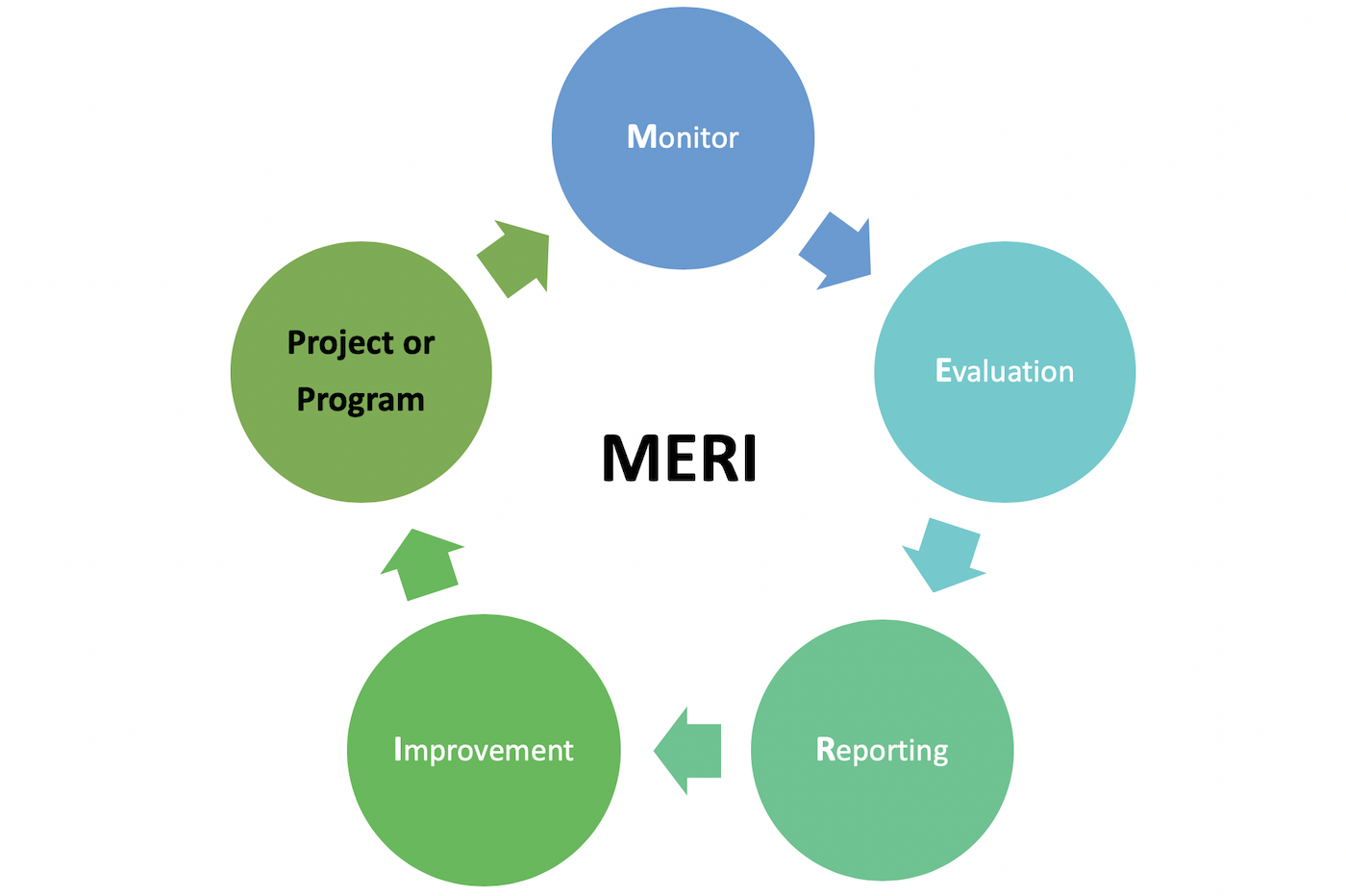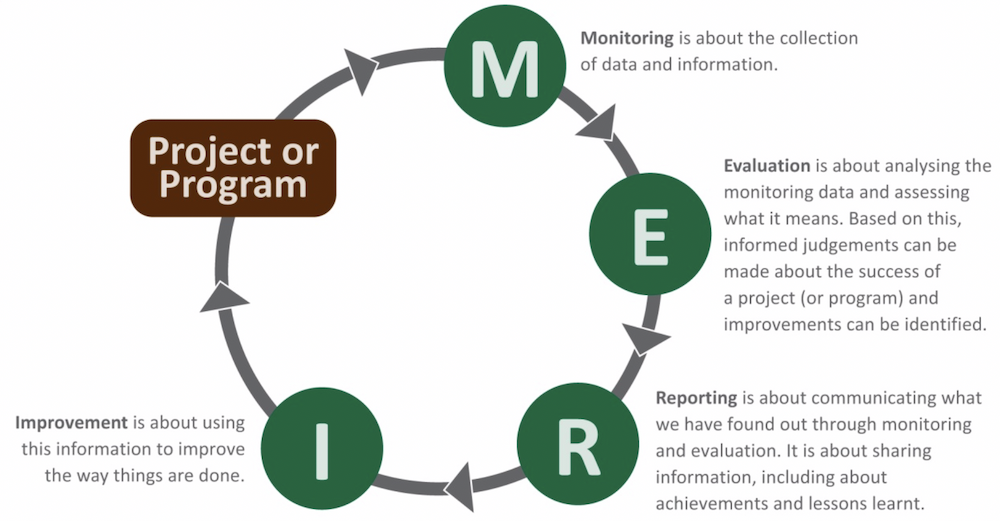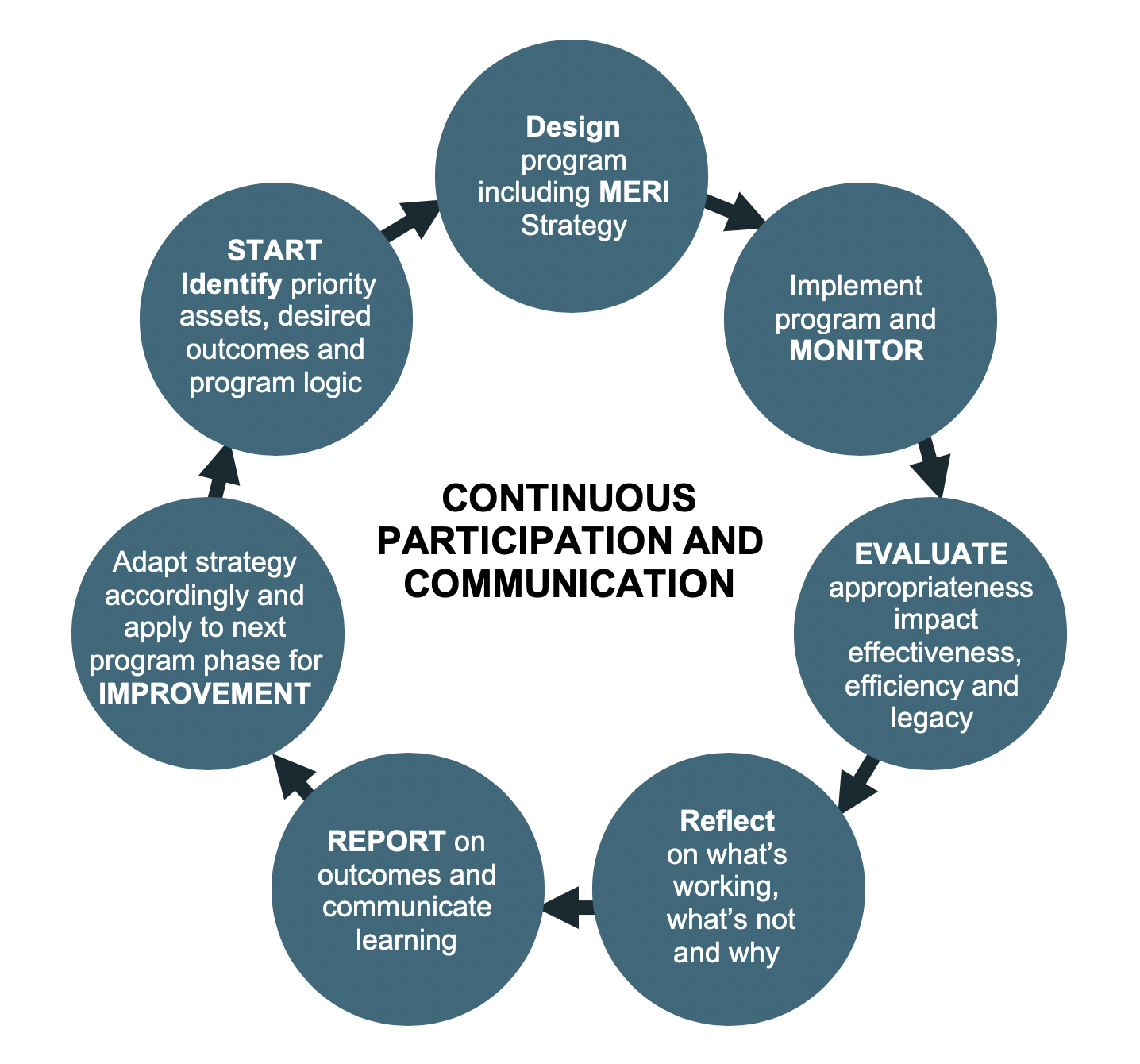Published – 8 October 2019 By Gavin Beever

MERI is a process designed to look at a project or programs: Effectiveness, Impact, Appropriateness, Efficiency and Legacy. Assessing program performance and any change over time, against short, medium or long term desired outcomes, is an objective of the MERI framework.
The approach supports adaptive management over the life of a project or program. It helps develop a bank of foundational knowledge and supports the development and implementation of good governance and accountability. It provides opportunities to improve program and project design and delivery and to reorient investment at key decision points, throughout the life of the investment strategy or policy.
It was developed in a natural resource management context and it has been implemented in programs that include human, social, natural, physical and financial assets.
The activities in MERI provide the means to assess the impact, appropriateness, effectiveness, efficiency and legacy of projects, programs and policies and a process to promote accountability, (Commonwealth of Australia, 2009), see below.

The Australian Government MERI Framework describes MERI as:
“A continuous cycle of participation and communication rather than as a single evaluation event. MERI promotes learning and adaptive management in response to progressive monitoring and evaluation which enables improvement in program design and achievement of desired outcomes”.
Developing a MERI Plan
A MERI Plan is developed at the start of a project or program by carrying out the following steps:
- Document the detail and structure of the project or program
- In MERI planning is via Program Logic, that is using the: Program Logic Method
- Monitor: Establish what will be monitored and how
- Evaluate: Assess progress against the objectives, desired outputs and outcomes; whether the required progress is being made within the required timeframes and whether the right indicators are being monitored
- Reporting: Detail how activities, experiences and outcomes are going to be communicated to stakeholders throughout the life of the project or program
- Improvement: Identify how opportunities for continuous improvement are to be discovered and implemented
Key Principles and Questions to Use in Developing a MERI Plan
- Fit For Purpose: Was the project or program well tailored to meet the needs of the project or program?
- Credible: Where the activities based on sound, scientific, defensible principles?
- Transparent: Is it clear where funds have been spent and what outputs and outcomes have been achieved by the funding and at what individual cost?
- Monitoring and Evaluation: What monitoring and evaluation is feasible given the budget? What key activities or outcomes should be monitored? What evidence is required to demonstrate progress and achievements against objectives? What existing sources of information and monitoring and evaluation processes can be used?
- Cost Effective: Are the MERI activities within cost limits and do they draw on existing sources of information and/or monitoring and evaluation?
Key Aspects for the Evaluation Component of a MERI
- Appropriateness: Did the activities prove to be the best way to achieve the desired outcomes and did they align with the needs of the stakeholders? Information on stakeholder needs analysis can be found here and information on goal setting can be found here.
- Impact: What are the outcomes and results of the planned activities?
- Effectiveness: Were the planned activities carried out and were they of the expected standard?
- Efficiency: Did the project or program stay within budget and attain the highest value for the resources used? Or, could the outcomes be achieved more simply and for less cost?
- Legacy: Will the project or program continue to have impact after it is finished? Are there activities that could encourage a legacy effect?
Reporting
Plan interim and final reporting which will involve the following:
- Summary of project activities and the results monitored
- Documenting and reporting progress towards the desired outcomes
- The identification of things that have been learned and any opportunities for continuous improvement
- Provision of any evidence, e.g. photos, maps, data, case studies, etc
- Financial reporting
Conceptual Diagram of the MERI Cycle (Australian Government 2009)

Content sources and further information
Monitoring, Evaluation, Reporting and Improvement Strategy (2013) – Caring for our Country and the Biodiversity Fund
Example MERI Plan – National Landcare Program
NRM MERI Framework (2009). Commonwealth of Australia
Monitoring, Evaluation, Reporting and Improvement Framework (2013). Commonwealth of Australia, Environmental Water Office
Program Logic for Extension Project Planning (2018). Gavin Beever, Extension Practice – extensionAUS
Needs Analysis (2018). Gavin Beever, Extension Practice – extensionAUS
Goal Setting (2018). Gavin Beever, Extension Practice – extensionAUS
